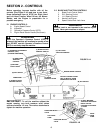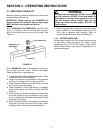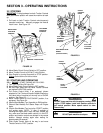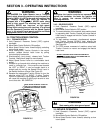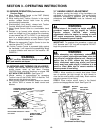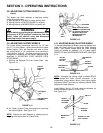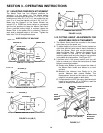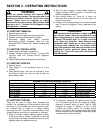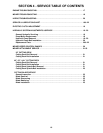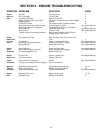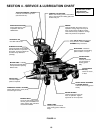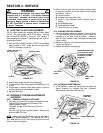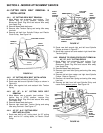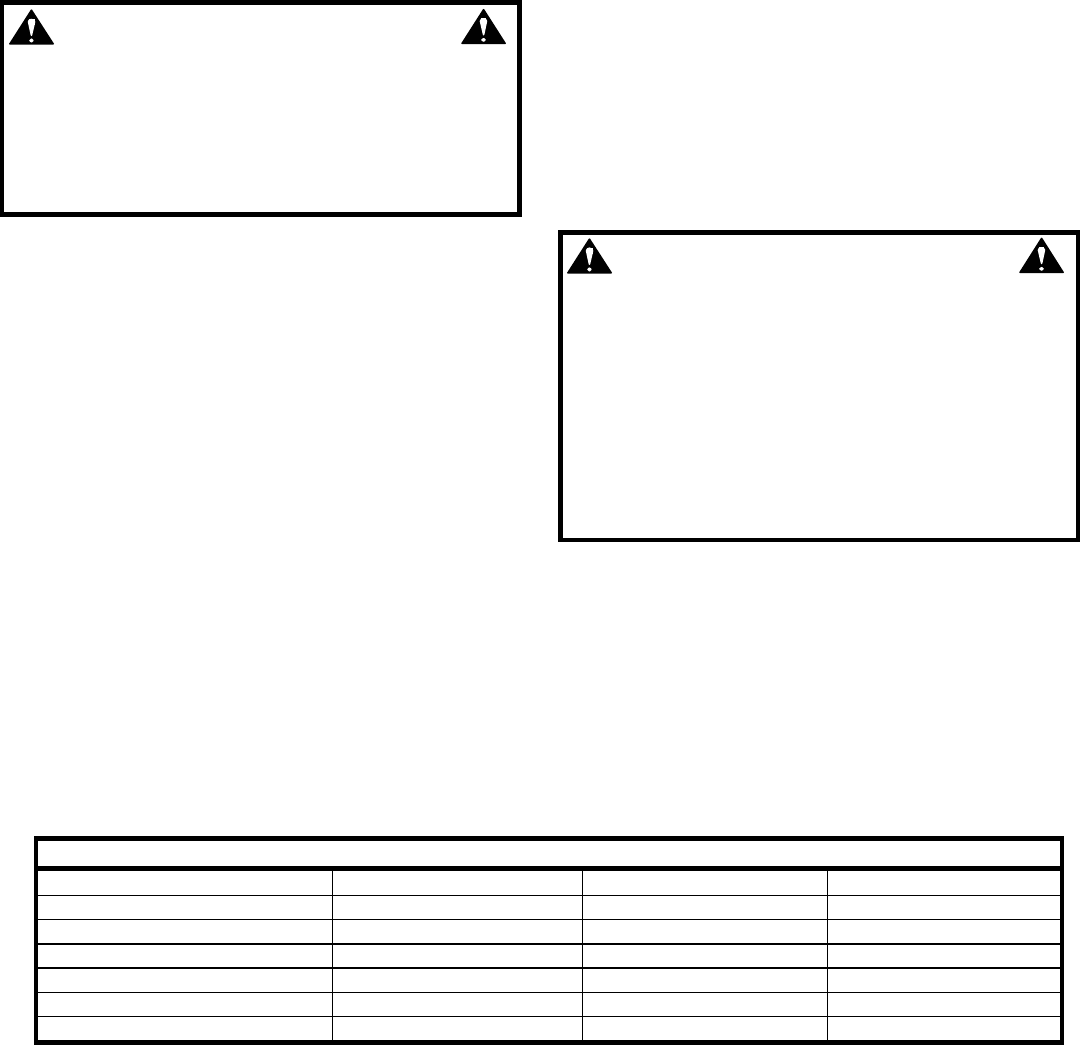
14
SECTION 3 - OPERATING INSTRUCTIONS
WARNING
Shield the positive terminal with terminal cover
located on battery harness. This prevents metal from
touching the positive terminal, which could cause
sparks. Cables must be connected to battery
terminals in the proper position. RED (Positive) cable
must go to the ( + ) terminal. BLACK (Negative) cable
must go to the ( - ) terminal.
3.13 BATTERY REMOVAL
1. Remove battery retainer.
2. Slide terminal cover away from positive terminal.
3. Observe and note cable positions on battery
4. Disconnect cables from battery terminals,
disconnecting BLACK (Negative) cable first, then
disconnect RED (Positive) last. Retain mounting bolts
and nuts.
3.14 BATTERY INSTALLATION
1. Position battery into battery compartment.
2. Connect cables to battery terminals. Connect RED
(Positive) cable first. Connect BLACK (Negative)
cable last.
3. Reinstall battery retainer and positive terminal cover.
3.15 BATTERY SERVICE
1. Remove battery.
2. Place battery in a well ventilated area on a level
surface.
3. Using distilled water, refill cells as required to cover
cell plates of which can also be seen through the
plastic battery case.
4. With cell caps removed, connect battery charger to
battery terminals. RED to positive (+) terminal and
BLACK to negative (-) terminal.
5. Slow charge battery at 1 amp for 10 hours. An
alternative fast charge should be no more than 2.5
amps for four hours.
6. If battery will not accept charge or is partially charged
after 10 hours of charging at 1 amp, replace with new
battery.
WARNING
The electrolyte (acid) produces a highly explosive
gas. Keep all sparks, flame and fire away from area
when charging battery or when handling electrolyte
or battery. Electrolyte (acid) is a highly corrosive
liquid. Wear eye protection. Wash affected areas
immediately after having eye or skin contact with
electrolyte (acid). Battery acid is corrosive. Rinse
empty acid containers with water and mutilate before
discarding. If acid is spilled on battery, bench, or
clothing, etc., Flush with clear water and neutralize
with baking soda.
Methods of Checking
Battery Condition
State of Charge Syringe Hydrometer Digital Voltmeter Five Ball Hydrometer
100% Charged w/ Sulfate Stop 1.280 12.80v Five Balls Floating
100% Charged 1.265 12.60v Four Balls Floating
75% Charged 1.210 12.40v Three Balls Floating
50% Charged 1.160 12.10v Two Balls Floating
25% Charged 1.120 11.90v One Ball Floating
0% Charged Less than 1.100 Less than 11.80v Zero Balls Floating
3.16 BATTERY TESTING
There are two types of battery tests: Unloaded and
Loaded. The unloaded test is the procedure that will be
discussed. It’s the simplest and most commonly used.
An unloaded test is made on a battery without
discharging current. To perform unloaded testing, check
charge condition using either a hydrometer or voltmeter.
1. Using a voltmeter, voltage readings appear instantly
to show the state of charge. Remember to hook the
positive lead to the battery’s positive terminal, and the
negative lead to the negative terminal.
2. A hydrometer measures the specific gravity of each
cell. The specific gravity tells the degree of charge;
generally, a specific gravity of about 1.265 to 1.280
indicates full charge. A reading of 1.230 to 1.260
indicates the battery should be charged before
testing. The chart on the next page shows the charge
level as measured by syringe float hydrometer, digital
voltmeter and five ball hydrometer.



